 |
|
|
History
Historical background of Sugar factory at ASKA
Asia's 1st Sugar Factory
 When one thinks of Aska Cooperative Sugar Industries Ltd., many things come to memory, its history, the pioneers in the field, the hardy local farmers, its workmen, the dedicated bureaucrats, the support it got at highest levels, the institutional infrastructure that helped, and how it over-come so with a back ground of its heritage of being the story of Sugar in Asia and the place where Asia's 1st Sugar Factory was established.
The jaggery mill which was started in the year 1948 by the name "The Aska Sugar Works and Distillery Ltd." by 'Biny and Co. Madras' which met with huge losses for lack of supervision and other transport bottle-necks. There after Fredrick Josheph Vivian Minchin, the Book Keeper of Biny & Co. purchased the said factory and with the new Sugar Technology obtained from Germany designed and rebuilt the factory in 1856. The new technology of the diffusion process, the sugar-cane was shouldered by battery of revolving knives and the whole thing was put into diffusion cylinders and water and steam injected by cylinders by closing entrance, whereby sucrose was dislodged, sucked out of the cylinder by hydraulic compressions and vacuum. In process, the bagasse is thrown out. This process involved a lot of dilution of water which has to be evaporated by boiling in open channel pans. The process of filtration of juice was done by animal charcoal (Bone clay) for de-colorization. Of course, this was to be abandoned due to religious objections and sulphate process was introduced. 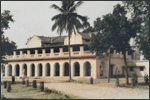 The old factory was in the side of river Rushikulya (between Aska Medical building to Harihar High School Building), now the whole area is known as Banibihar. Harihar Highschool buildings were the Office and Residence of the old sugar factory owner. Installation of Present Industry
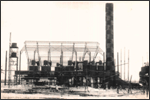 At this time one remembers the name of a great cooperator and thinker Sri Raghunath Panda, and a host of other like Sri Bhajaram Swain, Sri Adikanda Sahu, Sri Akula Das, Sri Krushna Ch. Tripathy, Sri Somanath Das. Sri Lokanath Mishra, Sri Govinda Pradhan, Sri Harihar Das, Sri Ramanath Panda and other that organised "The Aska Sugar Cane Growers Cooperative Society" and the foundation seed of this factory was laid. The factory is lucky to get the time and leadership at the initial stages the dynamic Sri B.Ramadorai, I.A.S., the than collector, Sri A.K.Ray, I.A.S. the Managing Director and subsequently the "Hottas" and other officers the cream of our administrative service, who succeeded them have brought the factory to the level, it could reach at present. One also remembers Sri Biju Patnaik, the then Chief Minister and later the Chairman of the Planning Board of Orissa and the Chief Secretary and their blessings and hand in making things easier. The factory should also be grateful to Block Development Officers and the Chairman of Panchayat Samiti(s) of Aska, Dharakote and Sheragada who contributed a lot in its initial stages.
 Erection of a cane sugar plant
Installation of a cane sugar manufacturing unit at Aska under Cooperative sector was conceive long back, passed many years in gestation, & finally took a formative shape during 1956. In fact, Aska area being historically reputed and agronomical ideal for sugar cane cultivation had all infrastructure facilities for erection of a cane sugar plant.
With financial and moral support from all concerns the long cherished dream of this area came to reality under the name "The Aska Coop. Sugar Industries Ltd.", Aska and entered into production of sugar during Dec1963. 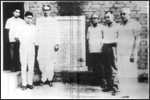 The plant was inaugurated on 16th Dec’ 1963 by Sri Biju Patnaik, Chairman, Planning board, Orissa in presence of Sri Biren Mitra, Chief Minister, Orissa, Sri A.C. Bandyopadhay ( I.A.S) and Sri K.S. Bawa (I.A.S), Secretaries Cooperation. Present Position
The plant was initially designed for 1000 TCD commencing its first crushing in 1962-63 season and subsequently balanced to 1219 TCD in 1981. Later the crushing capacity has been enhanced to 2500 TCD in 1995.
Historical Background of Sugarcane
 SUGAR CANE belongs to the grass family and is classified in the tribe Andropogonae under Granineac. The Botanical name is Saccharum, derived from the Sanskrit word Sharkara, meaning Sugar.
SUGAR CANE has been known from the earliest times even before the christen era and the ancient civilization. There are considerable historical, linguistic and botanical evidence to prove that India is the home of the thin class of canes, which were in cultivation in the Indo-Gangetic plains and are now classified under the botanical species, Saccharum barberi and Saccharum sinense. The plant is mentioned in one of the oldest and most sacred books of Hindus, the "I have sorrounded thee with a clining Sugar cane to remove aversion, So that thou shalt not be able to me." There is a mythological strong relating to “Raja Trisanku” of “Ikshvaku dynasty”, which implies the origin of Sugar Cane in India. The Goddess “Lalitha” is pictured as having a Sugar Cane in her hand and mention of it is made in the verse in “Lalitha Sahasranamam”. The God of Love, Cupid, is the symbolised as having a bow made of Sugarcane stalk.  The Sanskrit word for sugar cane used in the “Atharva Veda” is “ikshu”. This word is linked with “Ikshvaku”, son of “Manu” and a legendary solar king. “Ikshvaku” is mentioned in the “Rig Veda” (1500 BC). The word “ikshu” has now become “ikh” in Hindi, which is specified for the thin, hardy, barbari sugarcanes. Buddhist literature abounds in mention of sugarcane and sugar. The concentrated syrup from sugarcane phasita is mentioned in the Tatimoksha, the earliest Buddhist text (500 BC). The development of Sugar is dated around 300 BC. Khanda (now Khandasari), the crystalline raw sugar, and Sarkara, the refined crystal sugar, are later developments. Noel Deer (1949) mentions that Buddhists were fascinated by sugar cane and developed religious parables from primitive sugar cane technology.  Charaka (100 BC) records two types of Sugarcane, ikshu and paundra, evidently separating the thinner class of canes from the thicker. He was stationed at Taksasila (Taxila), where Panini and Patanjali lived. It sounds obvious that sugar and sugarcane were known at this centre of learning around 400 BC. Scholars from Persia and Central Asia gathered at this University and it is reasonable to presume that knowledge of cane diffused to China via Central Asia. Alexander the Great and his soldiers carried Sugarcane (the honey reed) from India to the west by about 325 BC. It later reached Syria, Madeira and the Canaries. During the 13th century Ibn-i-Batuta traveled in India. He makes frequent mention of Sugarcane in his Safar-namah and refers to the paundra canes of the Malbar coast. Detailed description of sugarcane and the manufacture of all forms of sugar and even distillation of spirit is contained in Ain-i-Akbari. Columbus in his Second voyage to the new world in 1943 carried sugarcane to Hispanola (now known as Haiti), from where it was taken to Puerto Rico in 1515 and thence to Maxico in 1520. The Portuguese introduced the plant into Brazil in 1500. 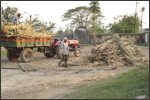 During this period India was one of the main exporters of sugar to Great Britain. But there was no improvement in the trade owing to the prohibitive heavy import duty on Indian Sugar by Great Britain. Large quantities of colonial sugar sought an outlet in Indian and thus the country became an importer of sugar. During 1800 to 1878 India exported sugar to foreign countries by sea. During the end of 19th century the Indian sugarcane Industry was confined mostly to the subtropical belt. It is a historical anomaly because sugarcane is a tropical plant and grows best under these conditions. The indigenous, thin canes which were being grown in sub tropical belt wee poor in yield compared with the thick class of canes grown in the tropical parts of the world. The yield was hardly 16 tones/ha and most of the cane was converted into gur. Large quantities of white sugar were imported from outside, mostly Java (now Indonesia). During the early part of the 20th century Pandit Madan Mohan Malaviya raised an agitation in the legislature of those days that, Something should be done to save the Indian Sugar cane Industry from perishing. Added to this was the sad plight of the indigo cultivator of Bihar with the advent of the synthetic dye. 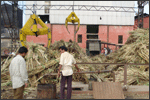 Crosses between S.officinarum, the thick canes, and S.barbari, the indigeneous thin canes, did not yield desirable types. It was then that the wild cane S.spontaneoum (kans, dharba) of coimbatore was crossed with an S.officinarum clone, "Vellai", which revolutionized the Sugar Industry not only in India but in the world. The first-generation hybrid 'Co-205', became a commercial success in north India, replacing the indigenous canes, giving 50% more yield and better tolerance to adverse conditions, particularly water logging. This remarkable achievement of improving the subtropical Sugarcane was the first ever at tempt in sugarcane by Venkatraman, which earned for him the name of “Sugarcane wizard". Later the hybrid varieties were crossed with S.barberi clones and thus the improved hybrid varieties were tri-specific hybrids involving S.officinarum, S.spontaneum and S.barberi. Thus the sugarcane revolution came into being 60 years ago, long before the green revolution. 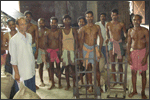 Today all the states have their own centre dealing with Sugarcane research, mostly with the agricultural Universities, and fluff is being sent to 17 such centre from the sugarcane Breeding Institute, Coimbatore. Source:- Sugar cane by, J.THULJARAM RAO B.V.NATARAJAN K.V.BHAGYALAKSHMI |
|